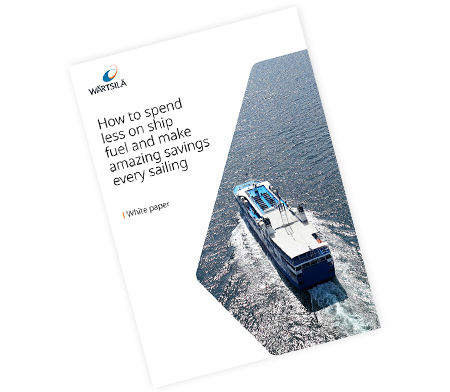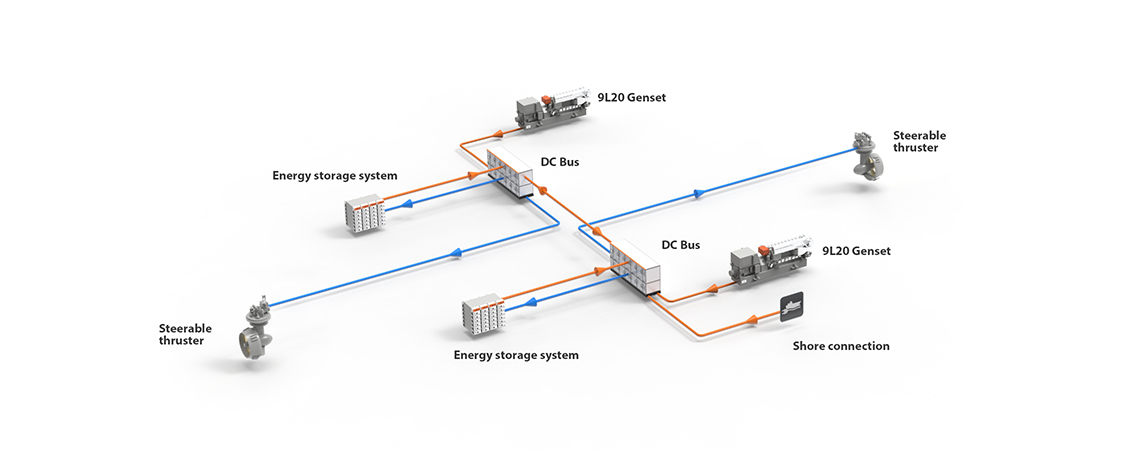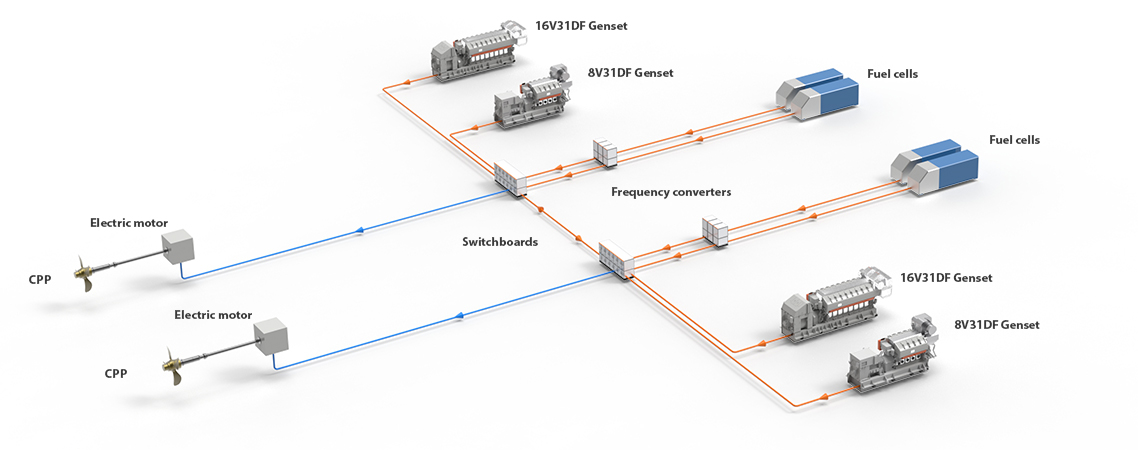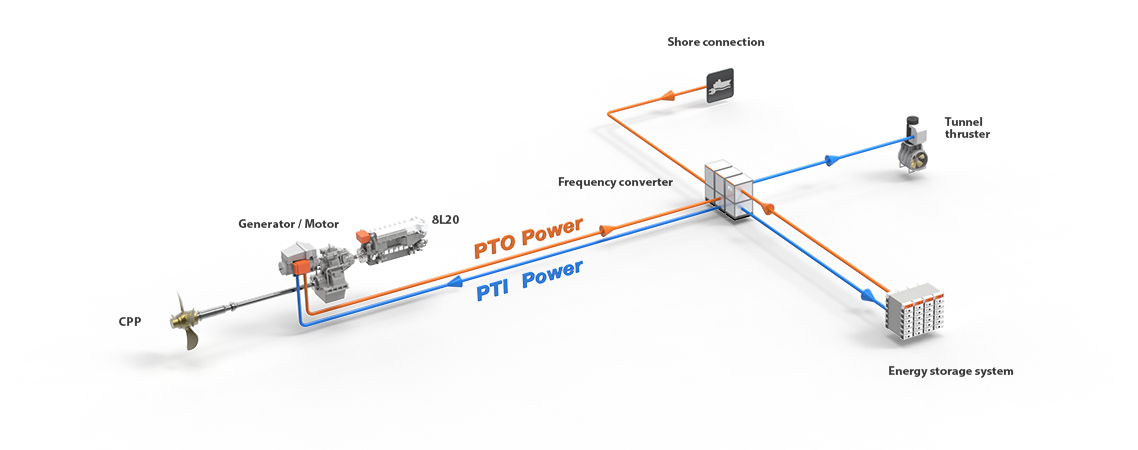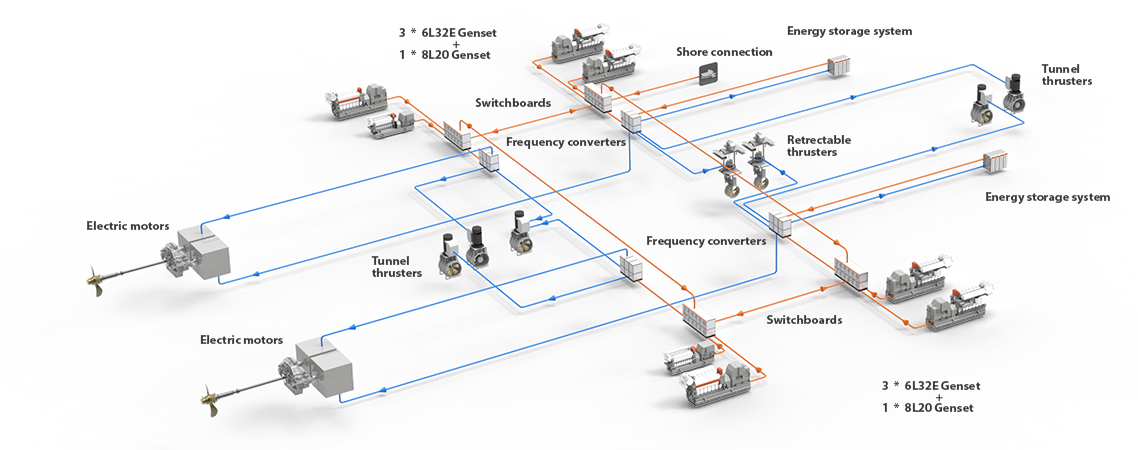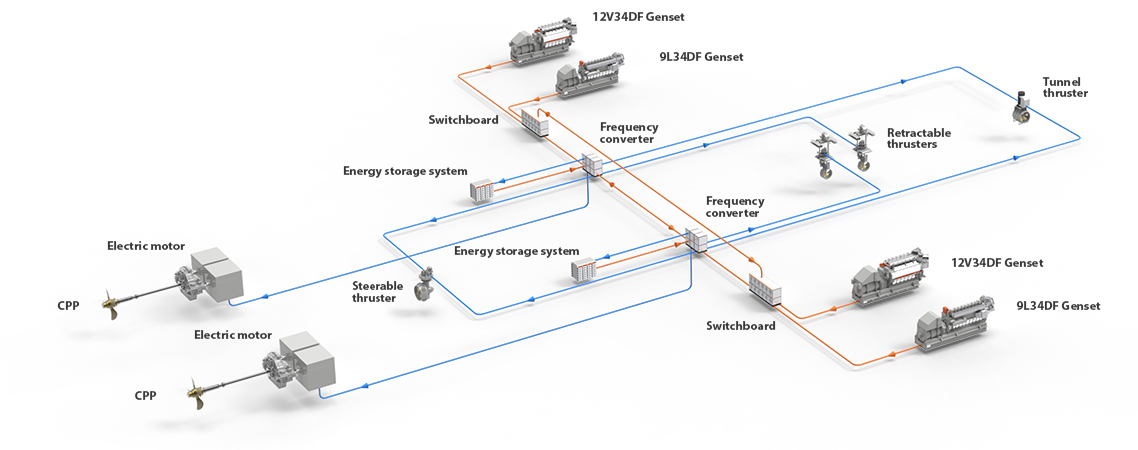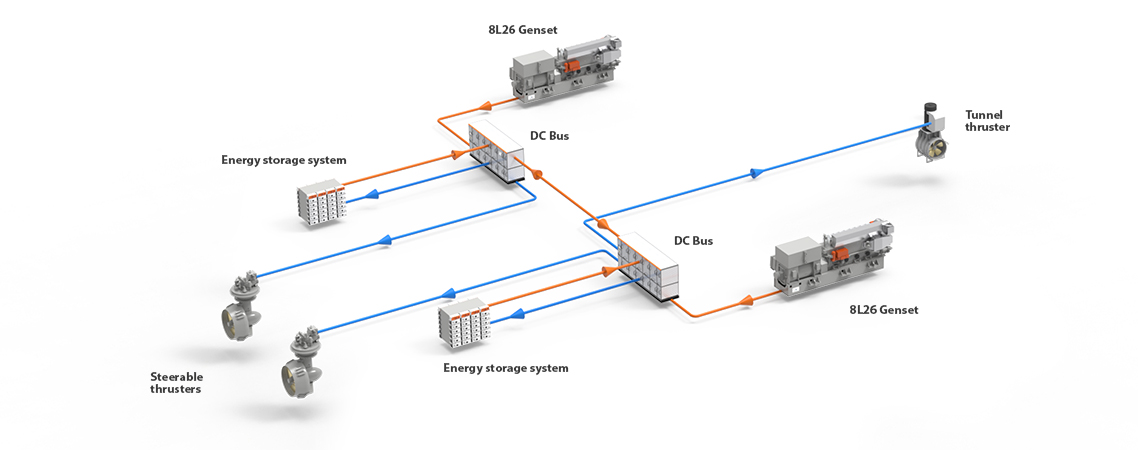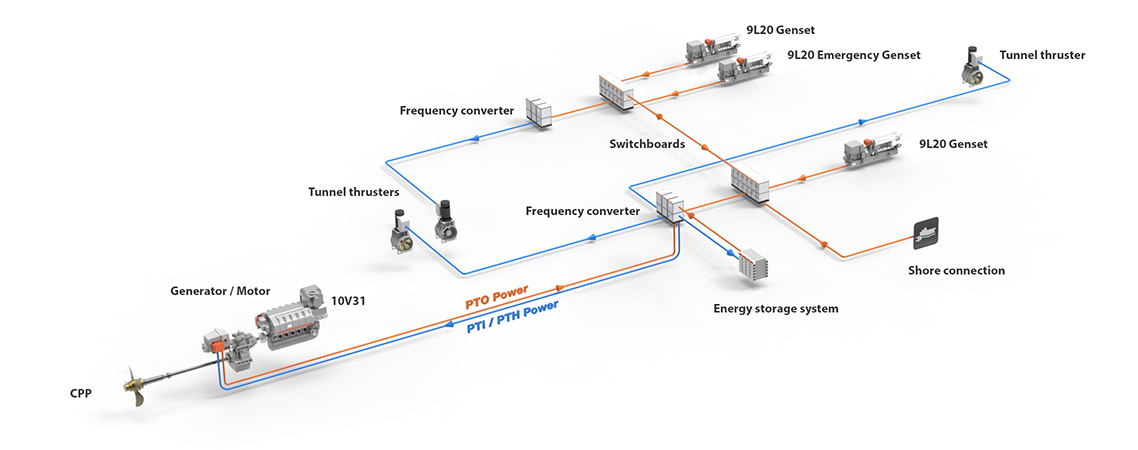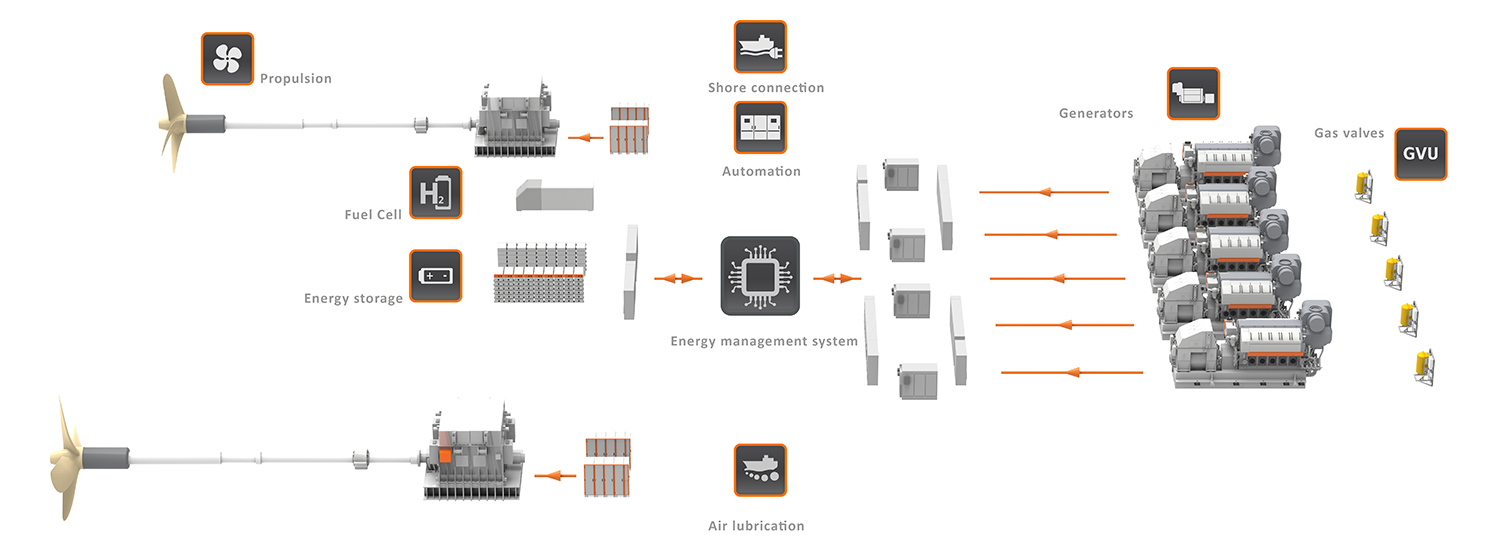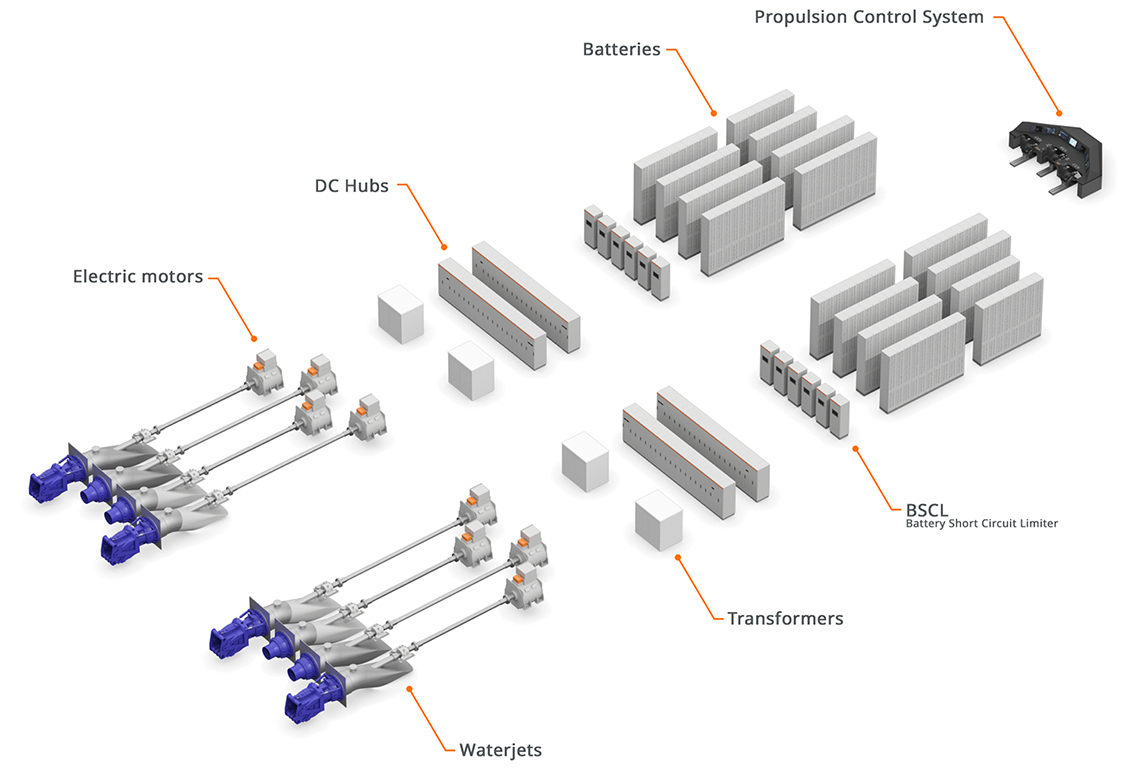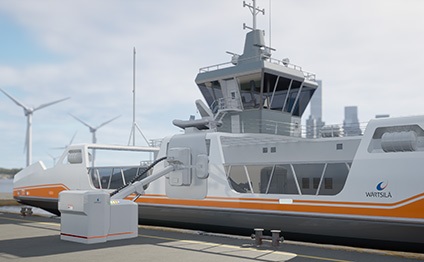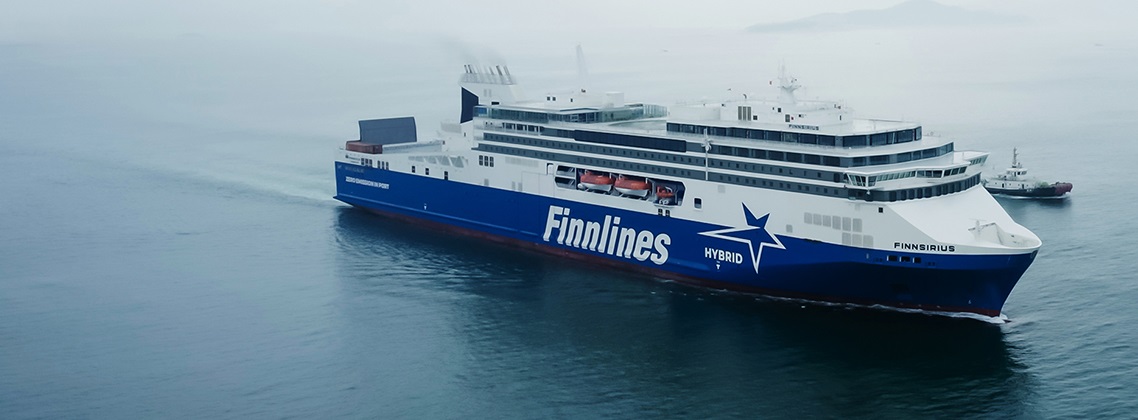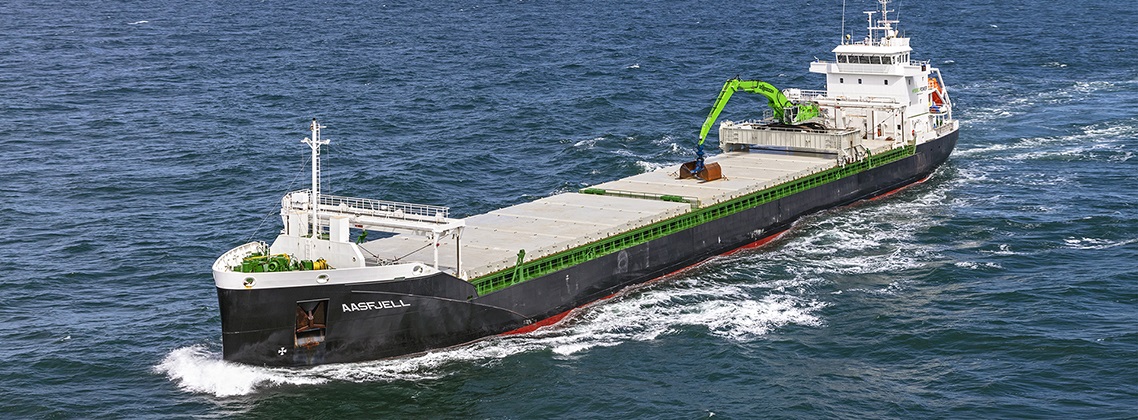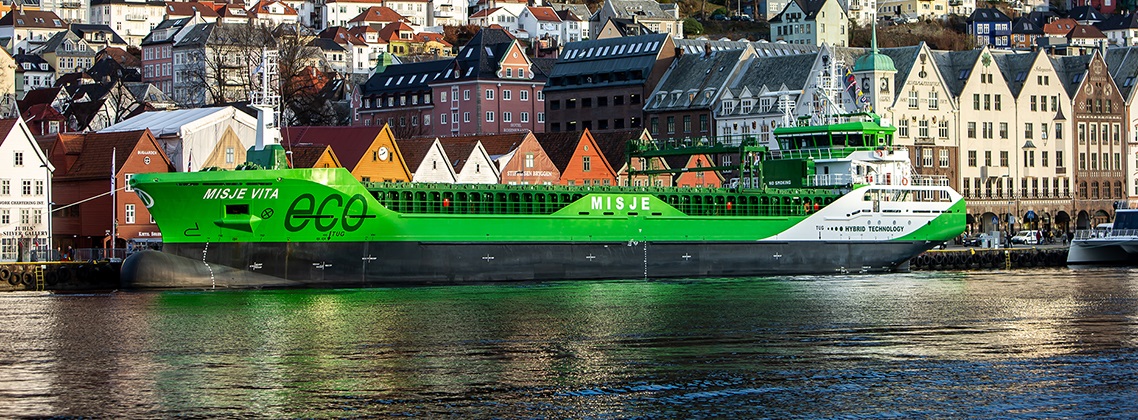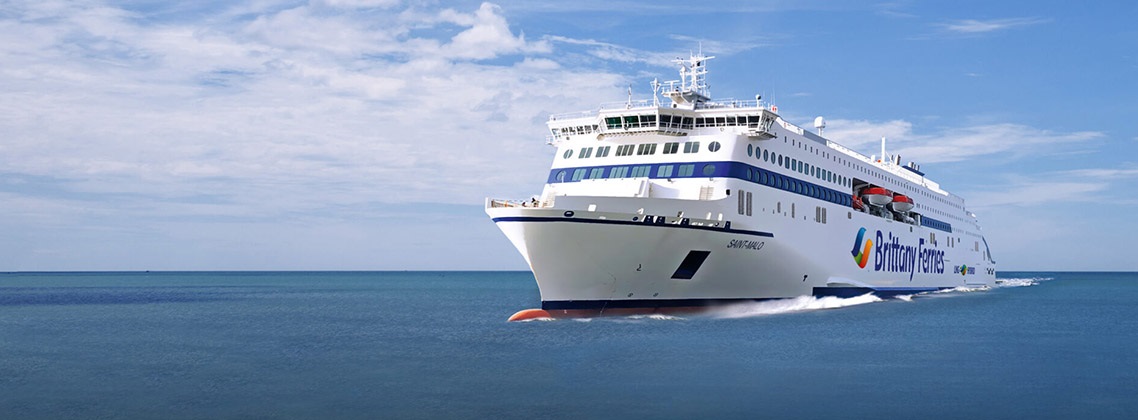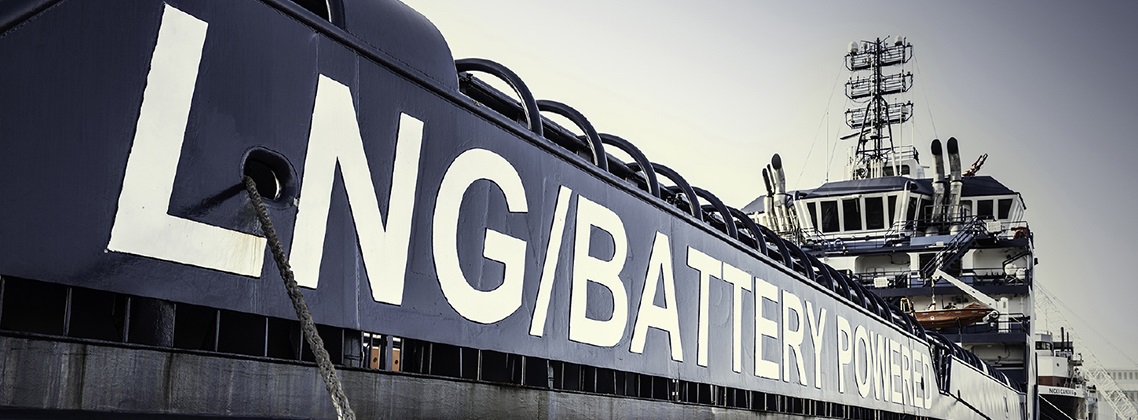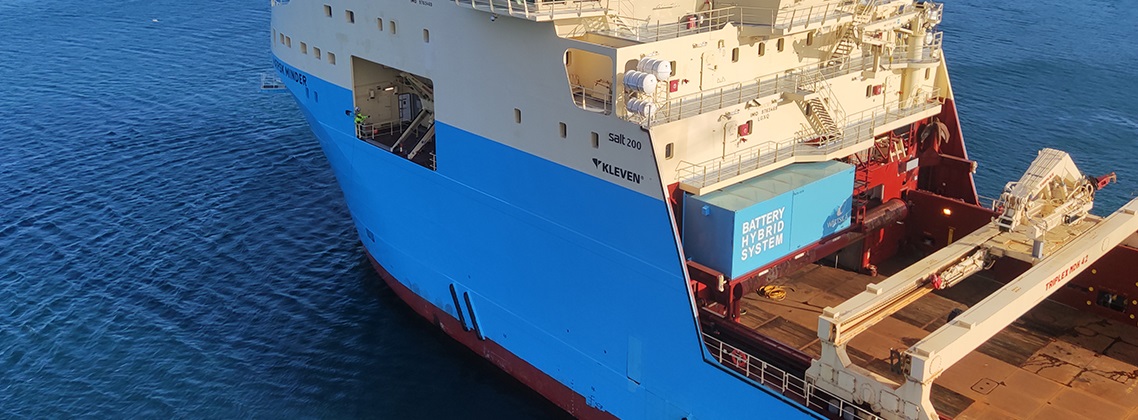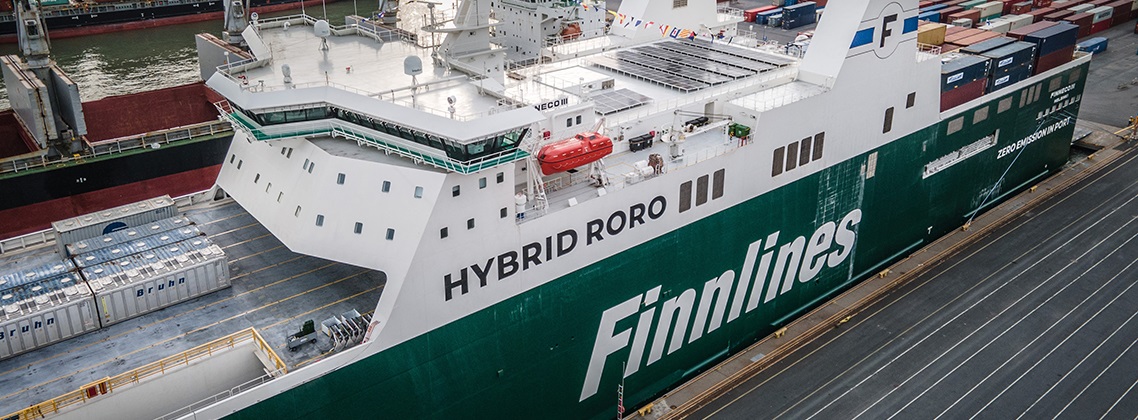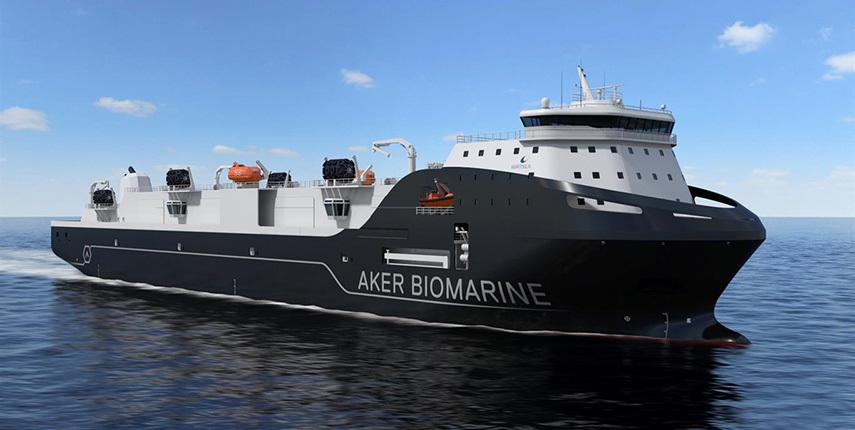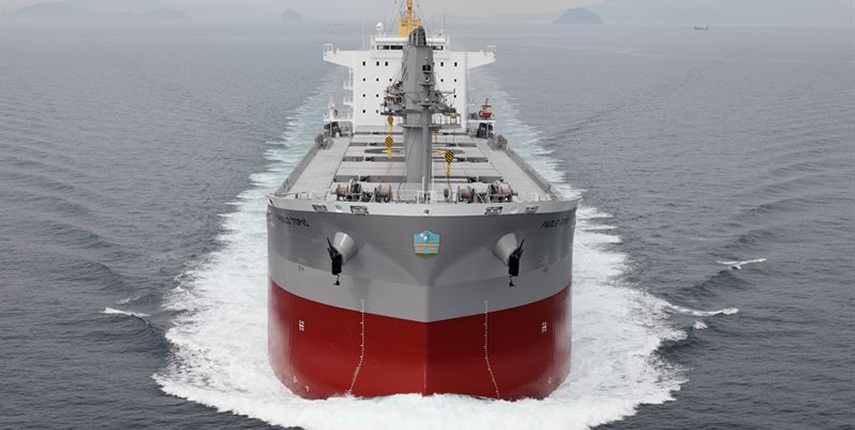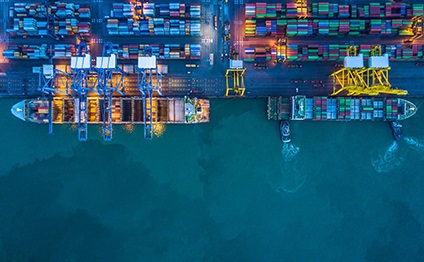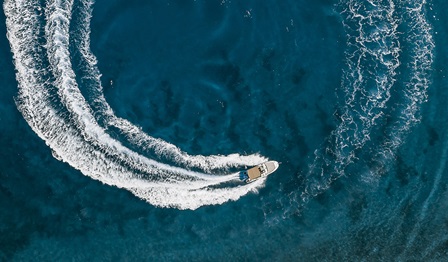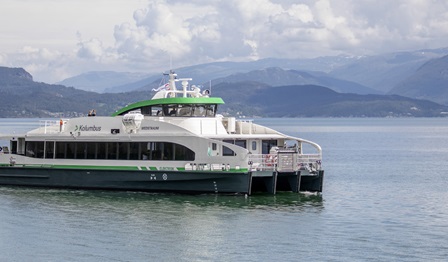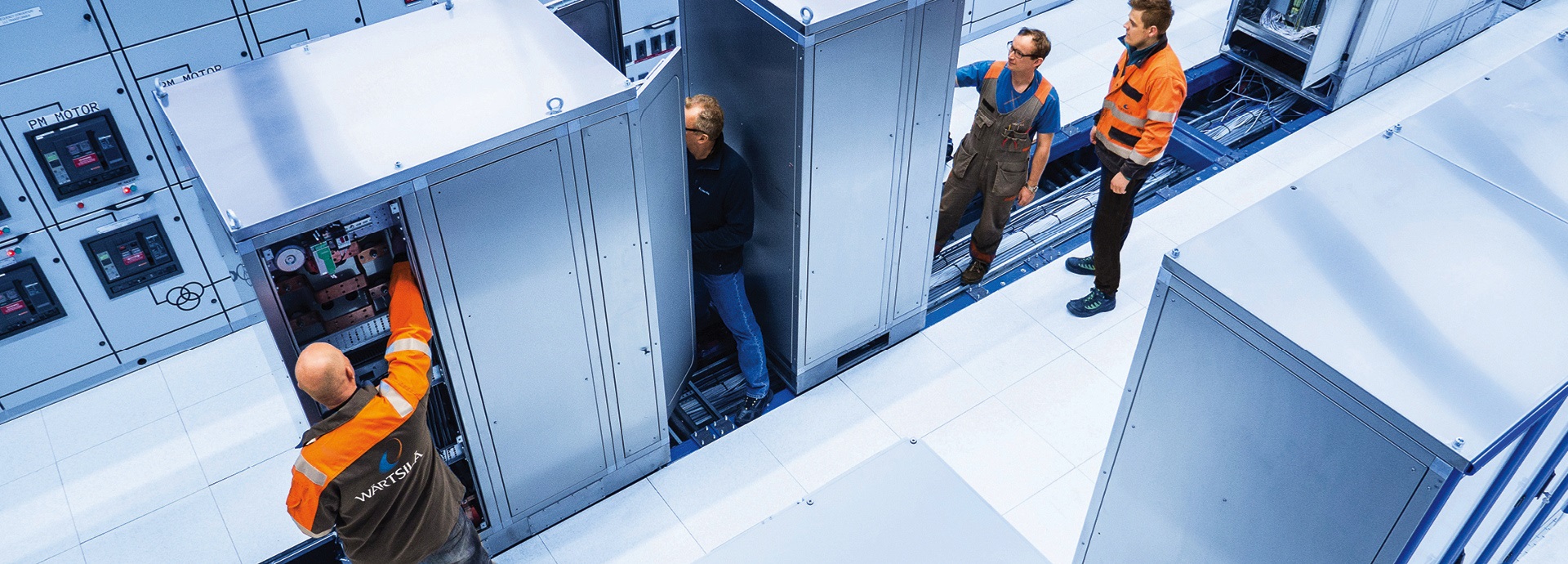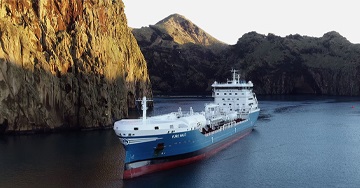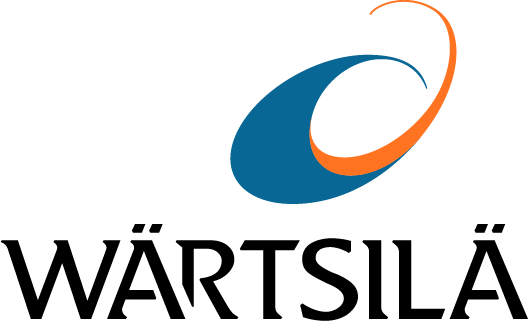
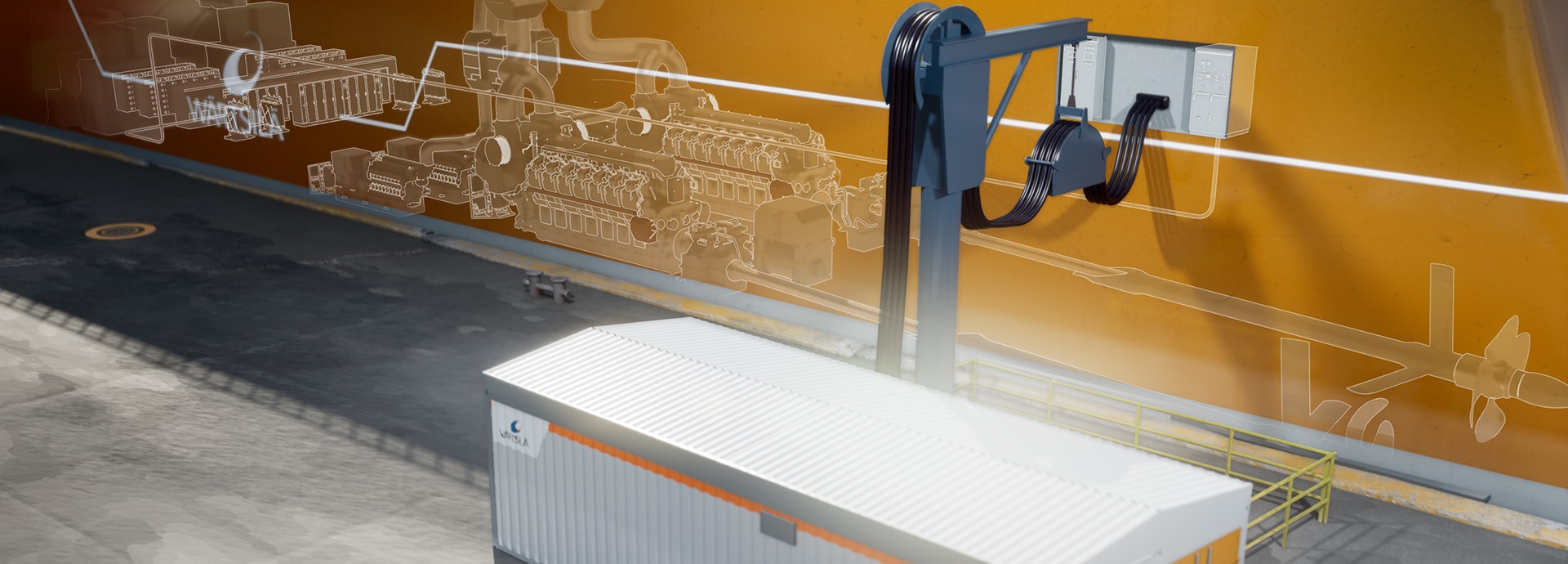
There’s more to electric shipping than electric propulsion
Electric shipping and hybrid ships are important solutions now that the marine industry has entered a new era – the age of decarbonisation and strict regulation. Vessels must be future proof: flexible enough to adapt to the changing needs in the future. As the regulation evolves and restrictions on emissions become stricter, the best way to stay competitive is to rely on the best available technologies. Electric shipping or ship electrification is one of the key solutions for marine decarbonisation.
The future of shipping is here: Play the video to discover how these interesting electrical solutions can reduce the environmental footprint for different vessels.
Electrical solutions and decarbonisation
Electrical solutions will deliver reduced emissions as retrofits and offer a competitive advantage also for newbuild vessels.
Electrical solutions have been part of vessel design for many years in the form of diesel-electric propulsion or shaft generators, for example. The share of green energy – from renewable sources such as wind, water, and solar – in land-based electrical grids is on the increase.
It makes sense for ships to take advantage of shore-based green energy. As an example, using a shore connection can reduce emissions significantly while the ship is in port. Depending on the vessel and its operating profile there are many ways to reduce its emission footprint. The key is optimisation: finding the right solution for each vessel.
Slow steaming used to be the favourite solution for many vessels to reduce emissions. Flexibility was not an issue then, so this means that some vessels will never be fully optimised. Electrical systems onboard make it possible to use smarter propulsion systems. Smarter, more resilient, and more flexible – and thus capable of adapting to the changing needs in the future of shipping.
What powers cruise ships in the future? Will cargo ship engines be electric?
Deepsea vessels will have to adopt green fuel engine technology to decarbonise. Electrical systems will be an integral part of the system including shaft generators and shore connection. Electric cruise ships and electric cargo ships are a futuristic concept, but they can go hybrid and take advantage of solar energy to improve their efficiency.
Tugs can benefit from hybrid or even full electric solutions. They operate close to the shore to land based electrical infrastructure. Because they have high load variations and spend long periods of time on standby, hybrid electric solutions will cut their GHG emissions significantly.
Ferries are often part of local transportation routes and can easily use the land-based charging infrastructure. If the route is short enough, the ferry can even be fully electric. Many ferries still prefer to have a hybrid electric solution to minimise risks.
Any short-distance or coastal vessel can be a hybrid ship. They can charge their ship battery with green energy available at the port. They can be a zero emission ship while manoeuvring, station keeping, and port navigating if they switch to full electric power during those operations.
Could you benefit from a hybrid solution?
Hybrid systems can be used on a wide variety of vessel types, both newbuilds and retrofits. Discover the clever ways that a hybrid solution could help you cut your vessel’s operational costs.
Battery-powered ships, hybrid ships or diesel-electric ships?
Which solution would be optimal for your vessels? The following are examples of actual solutions.
E&PMS landing page Solutions
Expand all
Why electrification – market trends and drivers
Watch the video and you will also learn three reasons to consider ship electrification as a solution for marine decarbonisation.
Solutions in more detail
Customer stories
Discover the benefits others have already gained from marine electric solutions.
Insights on electric shipping
Discover these insightful articles and case studies – they will build your knowledge of ship electrification and hybrid marine solutions.
Webinars related to electric shipping
Explore what you need to know about electric shipping and hybrid ships: watch the webinar recordings to learn from experts from the maritime industry and associations.
Hand-picked press releases
Wärtsilä signs Electrification and Integration Services agreement for USA’s first zero-emission high speed ferries project
Technology group Wärtsilä has signed a strategic partnership agreement to provide its Fleet Electrification and Systems Integrator Services for a project to build the first zero-emission high speed ferries in the USA. The fully electric vessels will be built for San Francisco’s Water Emergency Transportation Authority (WETA), the operator of the San Francisco Bay Ferry system.
The project, and several others Wärtsilä will work on under this partnership, are a part of the agency’s Rapid Electric Emission-Free (REEF) Ferry Program, a phased decarbonisation of high-speed, high-capacity ferry service in the San Francisco Bay. Wärtsilä’s track record with hybrid and zero emission ferry projects, as well as its expertise acting as an integrator for the delivery of hybrid and fully electric propulsion solutions were key factors in the company’s selection as a project partner. Wärtsilä will work within the WETA project team to finalise vessel and charging system concepts.
“We’re proud to operate the cleanest high-speed ferry fleet in the nation, but a zero-emission future for our system is within reach,” said WETA Executive Director, Seamus Murphy. “Wärtsilä’s expertise and experience will be incredibly valuable given the complexity our ferry decarbonisation program entails.”
“This is a major project within the maritime sector’s journey towards decarbonisation, and we are proud to be a part of it,” said Hanno Schoonman, Director of sales for AMER region, Wärtsilä Marine Power. “Wärtsilä joins an industry leading team tasked to develop newbuild battery electric vessels that combine innovative technology and sustainable practices. Wärtsilä is well qualified to provide this project support, and this agreement is a clear endorsement of our strong track record in systems integration and emission-free propulsion.”
After completing the conceptual phase, WETA will move on to the initial construction phase of a multi-vessel programme. This phase will involve the building of three smaller ferries with a capacity of approximately 150 passengers each and two larger ferries capable of carrying at least 300 passengers. Additionally, the scope of this phase will encompass the inclusion of battery charging floats. The construction of the first electric-powered vessel is slated to commence before the conclusion of 2023, with commercial operations expected to launch in 2025.
WETA has long been a leader in sustainability, taking action beyond California’s ambitious climate goals. To comply with new California Air Resources Board (CARB) regulations, and in order to continue to be a leader in the sector, WETA is committed to accelerating zero-emission implementation ahead of and beyond regulatory requirements.
Media contact for more information on this release:
Isabella Alder
Positioning and Strategic Communications Manager
Wärtsilä Marine Power
Tel: +44 (0) 7792 681 757
marine.media@wartsila.com
Image caption: Wärtsilä has signed a strategic partnership agreement to provide its Fleet Electrification and Systems Integrator Services for a project to build the first zero-emission high speed ferries in the USA. The fully electric vessels will be built for WETA, the operator of the San Francisco Bay Ferry system. © WETA
All Wärtsilä releases are available at https://www.wartsila.com/media/news-releases and at http://news.cision.com/wartsila-corporation where also the images can be downloaded.
Wärtsilä in brief:
Wärtsilä is a global leader in innovative technologies and lifecycle solutions for the marine and energy markets. We emphasise innovation in sustainable technology and services to help our customers continuously improve their environmental and economic performance. Our dedicated and passionate team of 17,500 professionals in more than 240 locations in 79 countries shape the decarbonisation transformation of our industries across the globe. In 2022, Wärtsilä’s net sales totalled EUR 5.8 billion. Wärtsilä is listed on Nasdaq Helsinki.
www.wartsila.com
Wärtsilä Marine Power in brief:
Wärtsilä Marine Power is a global leader in power, propulsion and lifecycle solutions for the marine market. From our end-to-end digital ecosystem planning to our future fuels development, Marine Power is driving the shipping industry forward on its journey towards a decarbonised and sustainable future. Our broad portfolio of engines, digital technologies, propulsion systems, hybrid technology, and integrated powertrain systems delivers the efficiency, reliability, safety, and environmental performance needed to support our customers. Our offering includes real-time insights into operations, performance, and energy use, performance-based agreements, lifecycle solutions, and an unrivalled global network of maritime expertise.
www.wartsila.com/marine
Take your easiest step on your journey to ship electrification - get in touch and let’s discuss your needs and options!
